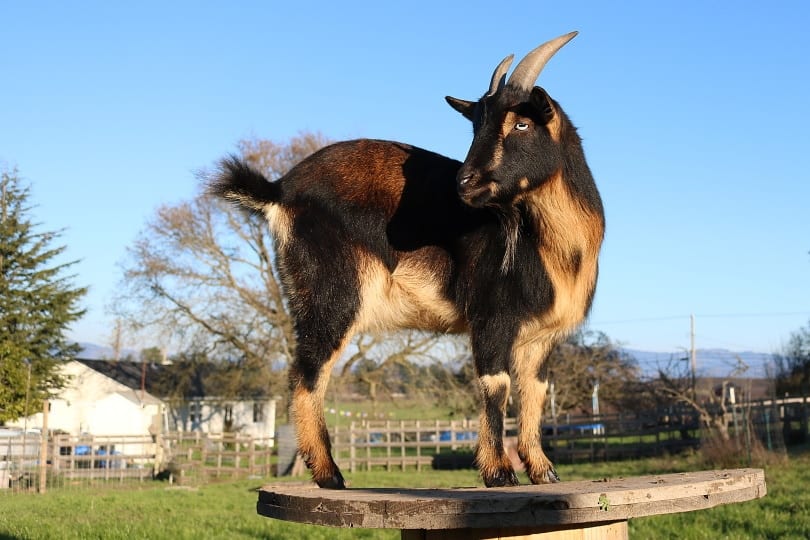With their horizontal pupils and crazy antics, goats are strange creatures, to say the least. However, there are many myths circulating about them. If you are fond of these quirky animals and want to learn more, read on to find the seven biggest myths and misconceptions debunked!

The 7 Biggest Goat Myths and Misconceptions
1. Goats Are Not Very Smart
It is not uncommon to see videos on social media showing goats exhibiting wacky and extravagant behavior. But, on the side of researchers, it is rumored that goats are much smarter than they appear. They would thus be able to solve problems qualified as complex. And to remember the strategy, even several months later.
Scientists demonstrated this awe-inspiring ability with a group of goats who had to learn a step-by-step strategy to collect food. Goats first learned to slide a rope down with their teeth. Then, to pull on a lever with their mouths. It took them less than twelve tries each to figure out the technique. And several months later, it took just two minutes to remember it. This is a rather astonishing ability of adaptation to their environment, which could explain, among other things, how goats can survive even in difficult habitats.
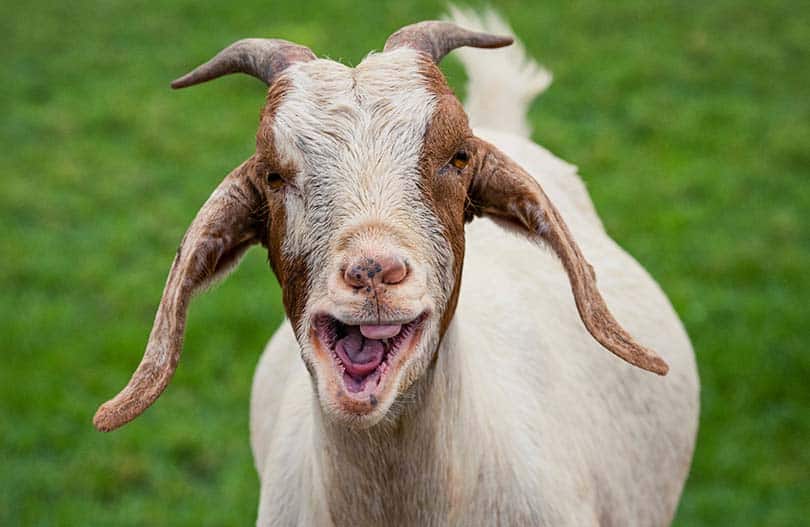
2. Goats Eat Everything
Goats are very curious animals, so they will try to taste anything that comes their way. But that doesn’t mean they’ll devour every blade of grass or every plant in your garden. Besides, the goat is an animal that sorts a lot: if you try to pass her hay that is not of excellent quality, she will not eat a bit. Rather capricious for an animal apparently so gluttonous!
3. Goats Are Grazers Like Cows
Goats may seem like they are grazing on the grass in the fields like cows, but they are not. In fact, they prefer to browse, that is, to eat the leaves and berries that are on trees and shrubs rather than on the ground. As a result, their way of eating is more like that of deer than that of sheep or cows.
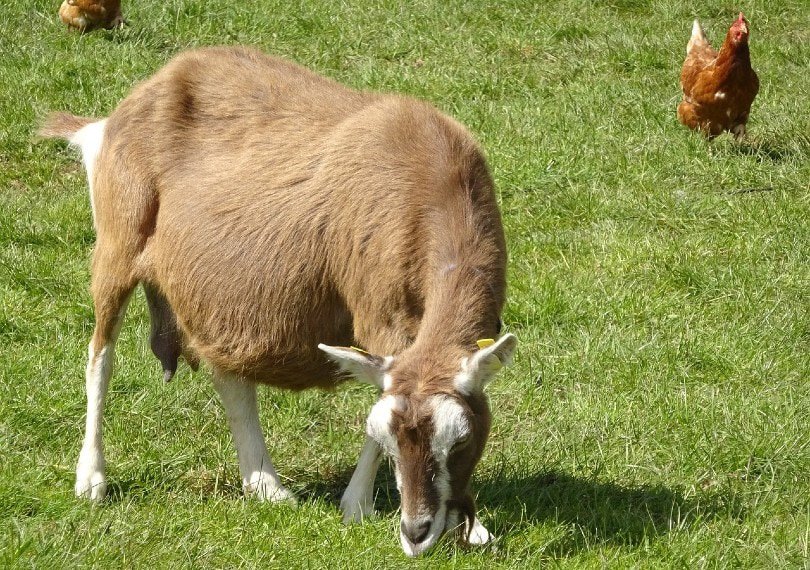
4. Goats Are Low-Maintenance Animals
If you think a goat is a low-care animal, think again! Raising a goat on your land requires having a closed enclosure to accommodate it. Be especially careful to put up a sturdy fence at least four feet high, as goats are known for their escape skills. They can even jump and climb trees! So, to stay healthy, a goat must be able to have enough land to feed, go about its business, and exercise. A 2,000 square foot area is ideal for a single goat. It then takes 1,000 square feet of additional land per animal that arrives in addition. It is also advisable to provide shelter for your goat so that it protects itself from the wind and the rain and that it rests there. You will need the appropriate litter consisting of wood chips, straw, or hay. This litter should be changed regularly when the droppings have dirtied it badly.
5. Goats Are in Heat All Year Round
Unlike cows, goats are not in heat all year round. The goat goes into heat when the days are getting shorter, that is, from mid-August until the end of October, or even until mid-December for latecomers. Gestation lasts 5 months, so the first kids are born in January, and the last little ones arrive in May. The little ones are fed with milk for 2.5 months and then move on to hay like the adults. Farrowing triggers lactation; a goat that has not had a kid cannot have milk. Lactation lasts between 9-10 months. They rest 2-3 months before starting a new lactation the year after.
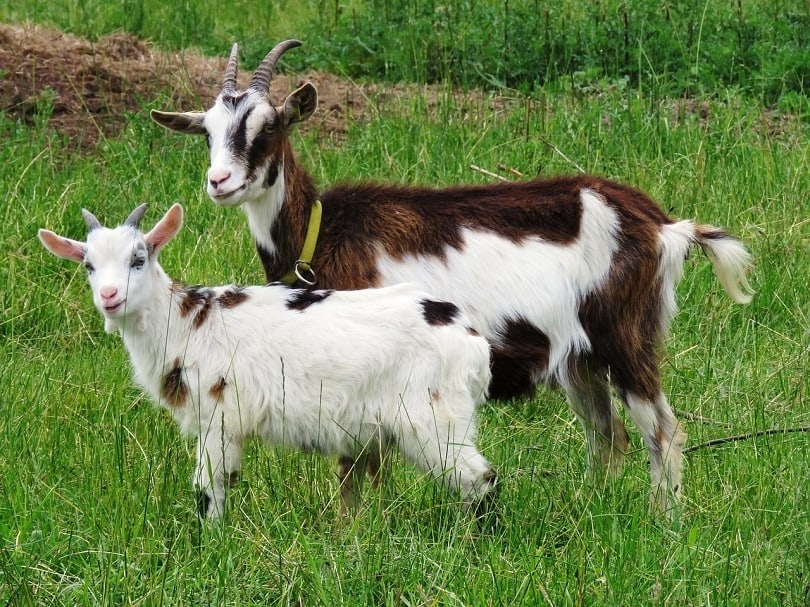
6. Goats Are Independent Animals
This myth could not be further from the reality: indeed, a goat cannot live alone. It must be raised in the midst of other congeners or in the company of sheep, donkeys, horses, or geese, for example. In fact, goats are excellent pets for both humans and other animals. These empathic and caring animals help promote physical, emotional, and psychological bonds in almost any living thing.
7. There’s No Real Reason Goats Have Horizontal Pupils
This is our final myth to debunk. If your cat’s pupil is a vertical slit, he is a predator. Conversely, goats have horizontal pupils, since they are prey. This is what a study published by the journal Science Advances suggests. Indeed, the shape of the pupil of an animal would be correlated depending on whether it is a predator or prey. Researchers at the University of California, Berkeley, and the University of Durham, England, came to this conclusion after studying 214 species.
Horizontal pupils would allow these animals to better detect the presence of a predator approaching from different directions. Really useful when you are prey! The researchers also made another discovery: the horizontal pupil eyes of herbivores, such as goats, can rotate up to 50 degrees and remain parallel to the ground even when the animals lower their heads to graze on the grass. An asset that would allow them to always keep an eye out for possible predators.
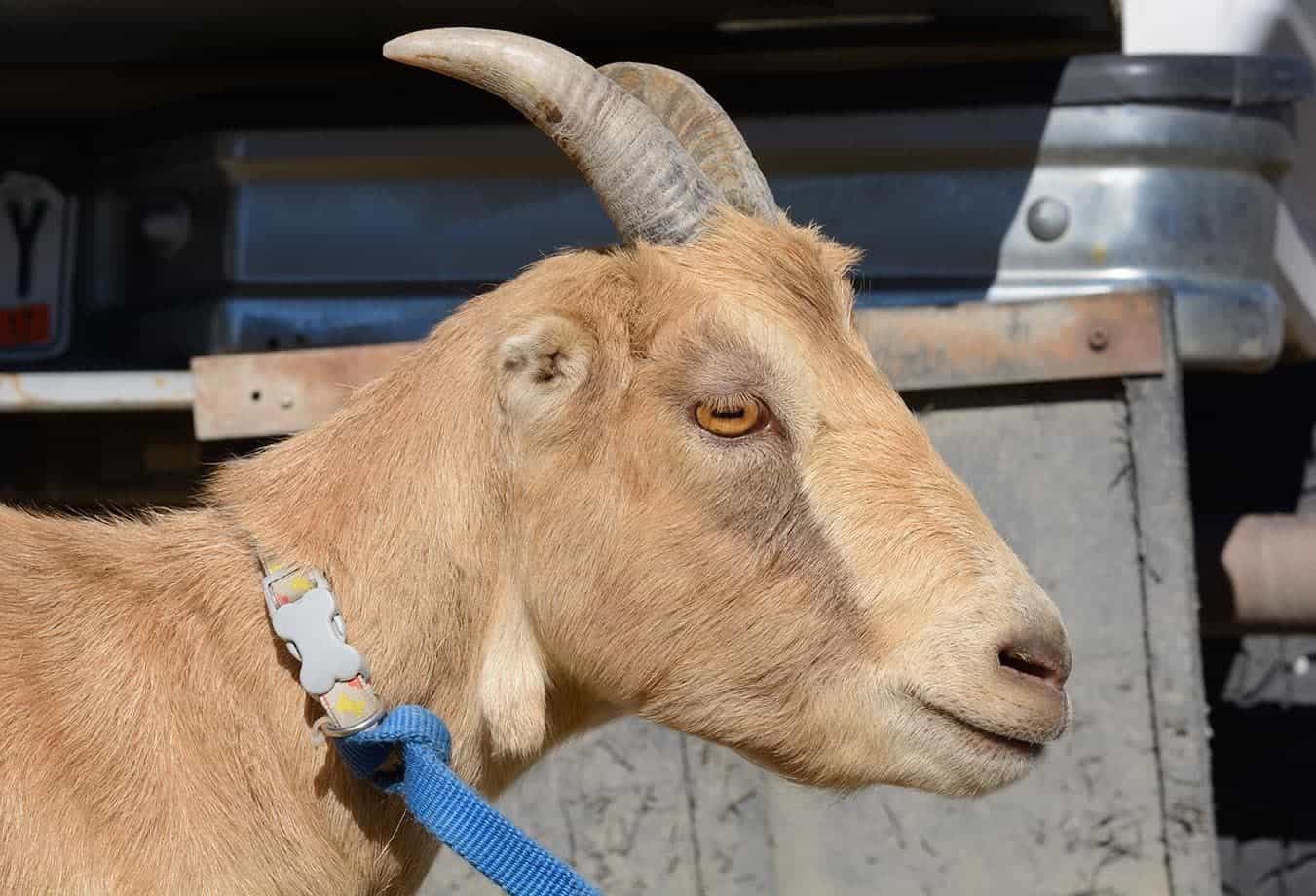

Bonus Fact: Goats Prefer Happy and Smiling People
Goats are able to distinguish different human expressions, and they prefer smiling faces to angry faces, according to a study published in Royal Society Open Science. According to the researchers, this study has important implications for how people behave with farm animals and other species, as the ability of animals to sense human emotions may be more prevalent than previously thought.

Final Thoughts
Goats are amazing animals with their share of well-kept secrets! We hope that the scientifically proven facts that we have presented in our article have enabled you to understand more about these ruminants, valued as much for their milk as for their quality as pets.
You may also want to know:
Featured Image Credit: Hollysdogs, Shutterstock
